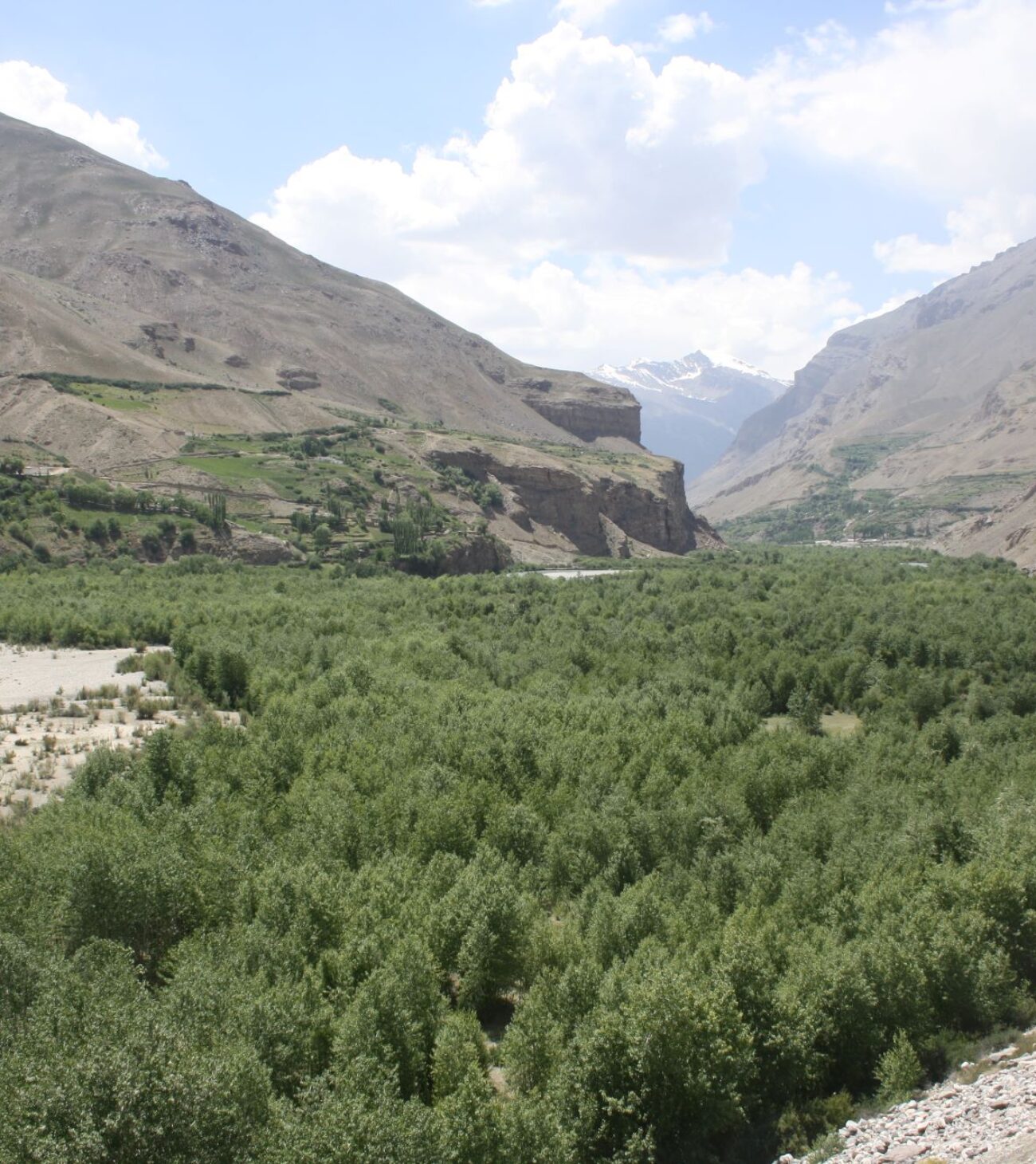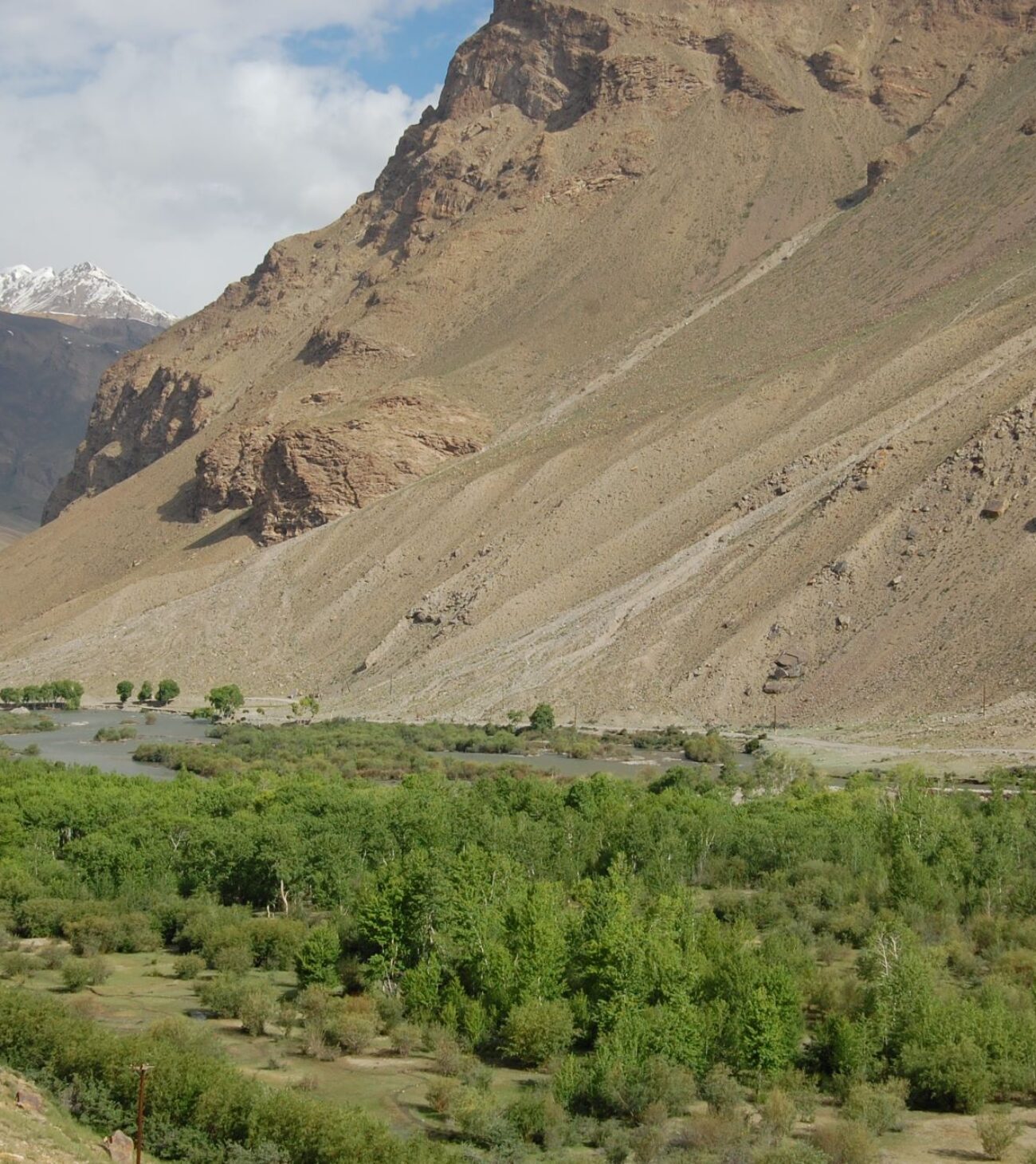In the Gorno-Badakhshan Autonomous Region (GBAO) in eastern Tajikistan, forest lands that previously were degraded are now being restored. The “bottom-up” approach that involves the active participation of local residents in decision-making on forest restoration and sustainable use played a key role in this process.
Energy Crisis and Forest Degradation
Currently, green floodplain forests stretch in the picturesque valleys of the Western Pamirs along turbulent mountain rivers at altitudes over 2 thousand metres above sea level. However, this is not how it was before.
The Soviet Union collapse in 1991 and the subsequent civil war in Tajikistan (1992-1997) were challenging for GBAO. Isolation from the outside world, lack of electrical power and coal forced people to use trees for heating and cooking.

This led to catastrophic forest degradation: almost 90% of the Pamirs’ forest resources were destroyed. Sand and dust storms have become common in a number of GBAO regions. Even after the war, forest degradation continued. Open access to forest resources and weak control by the small number of forestry staff made forests extremely vulnerable.
How to Save the Forest, an Important Factor for Survival in Rural Areas?
Zarifkhon Gulchinov, 52, lived almost his entire life in Barvoz village of Roshtkala district, GBAO. In the 1990s, in just a few years, right before his eyes, a beautiful forest area near his village turned into a semi-desert.
The local population and even the residents of other GBAO regions cut down forests and exported wood, including on KAMAZ and ZIL trucks.
According to Zarifkhon Gulchinov, he and his peers have thought of the forest as their second home since childhood. Therefore, Zarifkhon experienced a shock when the deforestation began. Gradually, wild animals – wolves, lynxes, hares, and other species – began disappearing from the degraded forest, along with trees and shrubs.

Zarifkhon Gulchinov agrees that during those years, people had to cut down forests to heat their houses and cook meals.
“Everybody needs to know when to stop. I also went to the forest for firewood but I cut down only old and dry trees and bushes,” he says, adding that from a young age, he was aware of the importance of the forest for survival in the “harsh conditions of the highlands”.
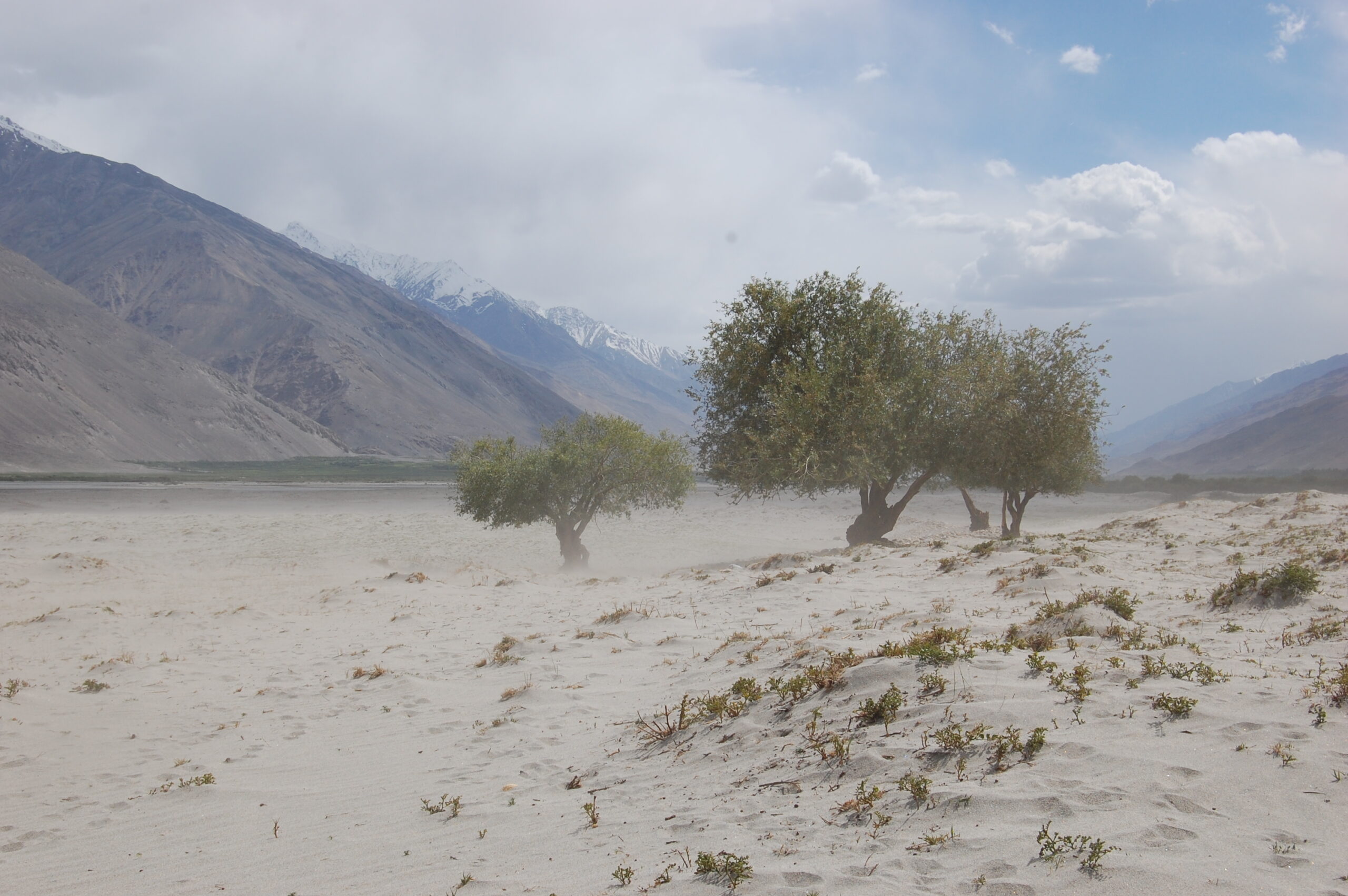
Like many local residents, Zarifkhon Gulchinov often thought about ways to save the forest. Unfortunately, this was not easy to do in those turbulent times. He received answers to his question only in 2006, when, for the first time in Tajikistan, the experimental introduction of Joint Forest Management began in his native village.
This new approach to restoring degraded forests was implemented in GBAO by the German Development Cooperation (GIZ). This initiative was carried out in close cooperation with the State Forestry Agency of GBAO and the local community.
Nature Conservation Is Beneficial for Everyone
The restoration of forest lands in Tajikistan began in Barvoz, the small high-mountain village in the Western Pamirs. Since 2009, within the framework of the “Joint Forest Management” approach, the State Forestry Agency of GBAO began providing residents of Barvoz village of Roshtkala district with forest land plots for long-term use for a period of 20 years with subsequent extension.
GIZ in partnership with the State Forestry Agency provided consultations and technical support to local forest users.
Joint Forest Management is based on a bottom-up approach, which means that the restoration and sustainable use of forest ecosystems is only possible with the active participation of local residents. Thus, former illegal forest users now legally use forest areas and are responsible for their protection and development. The collected wood is shared between the users and the Forestry Agency, which benefits both parties and encourages effective forest management.
Joint Forest Management specialist Khakrizo Nurmamadov has many years of experience in the dissemination of this approach in different regions of Tajikistan, including GBAO. He also worked as a recruiter and consultant in various international projects aimed at forest restoration in Tajikistan. According to him, Joint Forest Management is a significant step towards preserving the country’s forest lands, improving the quality of life of the rural population, and ensuring rich biodiversity for future generations.
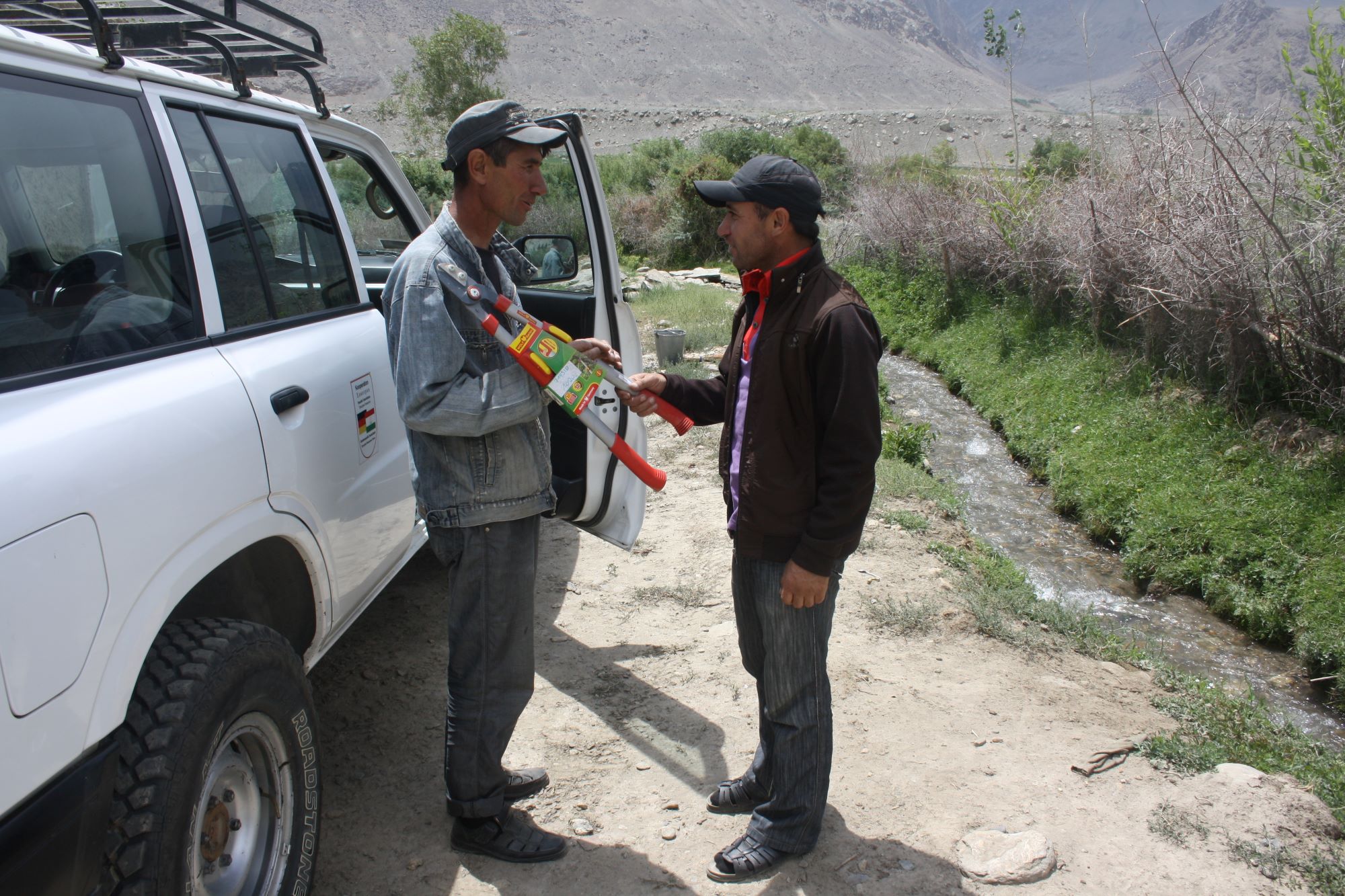
According to Nurmamadov, the forests of Tajikistan, including the forests of Western Pamirs, are not only a source of valuable resources but also a key factor in conserving water resources, protecting soil, and ensuring biodiversity.
“Successful forest restoration is only possible with the cooperation of all stakeholders, considering the unique nature of the area and an integrated approach that simultaneously solves environmental, economic, and social problems,” the expert explained.
According to Nurmamadov, Joint Forest Management leads to the restoration of key functions and ecosystems of forest lands. This contributes to adaptation to climate change, mitigation of its effects, biodiversity conservation, and resistance to desertification. It is important to note that Joint Forest Management has a significant impact on the implementation of three UN conventions: the Convention on Biological Diversity, the Framework Convention on Climate Change, and the Convention to Combat Desertification, the expert added.
The main achievements of the implementation of Joint Forest Management in GBAO, according to Nurmamadov, are the reduction of illegal deforestation, restoration of a significant part of forests, improvement of the quality of life of local communities, and improvement in the environmental situation in the region.
“The Joint Forest Management approach in the Western Pamirs has proven itself to be an effective tool for sustainable forest management,” Nurmamadov noted. “Expanding its application to other regions of Tajikistan could be the key to the conservation and restoration of valuable forest ecosystems”.
From New Approach Introduction in a Mountain Village – To the Reform of the Country’s Forest Industry
Today, Joint Forest Management is implemented in four districts in the Western Pamirs: Roshtkala, Ishkoshim, Shugnan, and Vanj. Agreements on long-term use of forest land plots were signed with about 500 forest users. In total, the forest area in GBAO is over 10 thousand hectares; currently, more than 2.5 thousand hectares of forest land are being restored within the framework of the project.
With GIZ support, a reform of the forest industry was carried out at the state level to spread the Joint Forest Management approach developed and implemented in GBAO to different regions of Tajikistan. In 2011, a new Forestry Code was adopted, which provides for various forms of local residents’ participation in forest management. Today, Joint Forest Management is implemented not only in GBAO but also in some districts of Sughd and Khatlon regions.
Thus, for rural residents in different regions of Tajikistan, the forest area of Barvoz village became a clear example of the successful restoration of forest lands that were degraded, thanks to the hard work and enthusiasm of local forest users and the support of GIZ and the State Forestry Agency of GBAO. Currently, forest users of Barvoz village continue to restore about 100 hectares of forest. As the condition of the forest improved, wild animals returned to it, the number of which is gradually increasing.
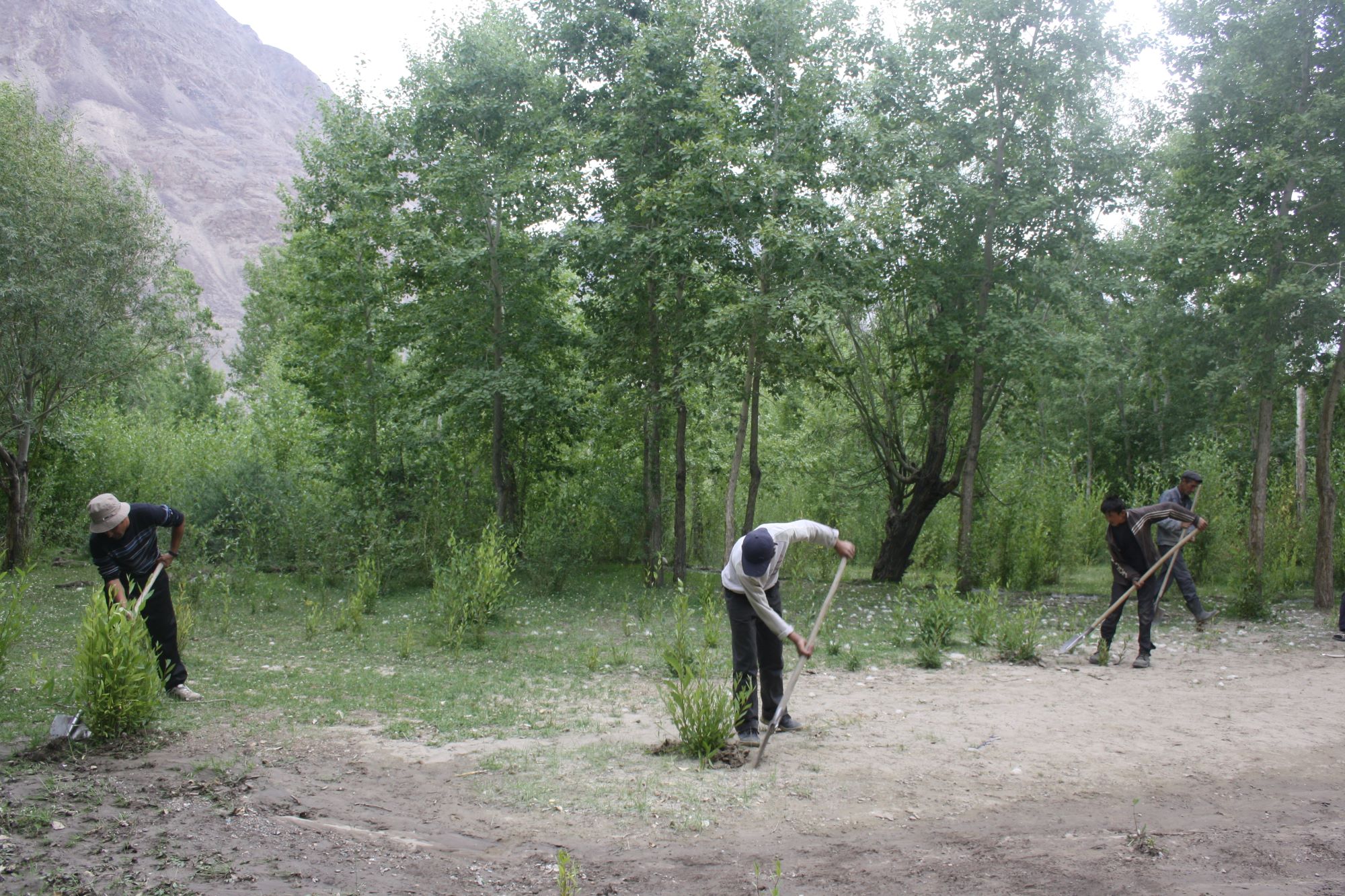
With GIZ support, Barvoz village residents restored a 2.5-kilometre-long irrigation canal and clean it annually. Water enters the canal from the Bodomdara River, the source of which is high-mountain glaciers.
“Luckily, there are no conflicts over the water distribution, since local residents follow the principles of fair distribution of natural resources, including water,” said Zarifkhon Gulchinov.
According to him, the restoration and preservation of natural ecosystems is especially important now due to climate change’s negative impact on biodiversity.
“We have to adapt to climate change and this is impossible without preserving natural ecosystems, including forests. If we help nature adapt to climate change, nature will help us adapt to it. Everything is interconnected,” Zarifkhon Gulchinov believes.Economic Incentives to Help Nature
Along with his fellow villagers, Zarifkhon Gulchinov also received 5 hectares of degraded forest land for long-term use.
“Thanks to Joint Forest Management, we have an additional incentive to restore the forest, since we received the legal right to long-term use of forest land plots,” Zarifkhon said.
Since 2012, it has been possible to collect firewood in the forest areas of Barvoz village both for personal needs and for sale to local institutions and organisations. Thus, forest users began receiving a certain income from their plots, which increased their motivation.
At the same time, according to the agreement, they could keep 70% of harvested forest products and provide the remaining 30% to the State Forestry Agency of GBAO. Since 2024, due to the improvement in the forests’ condition, forest users and the State Forestry Agency will start sharing forest products equally. Annually, through joint efforts, residents of Barvoz village plant hundreds of trees, strengthen the fences of forest areas to protect them from livestock, and repair irrigation canals.
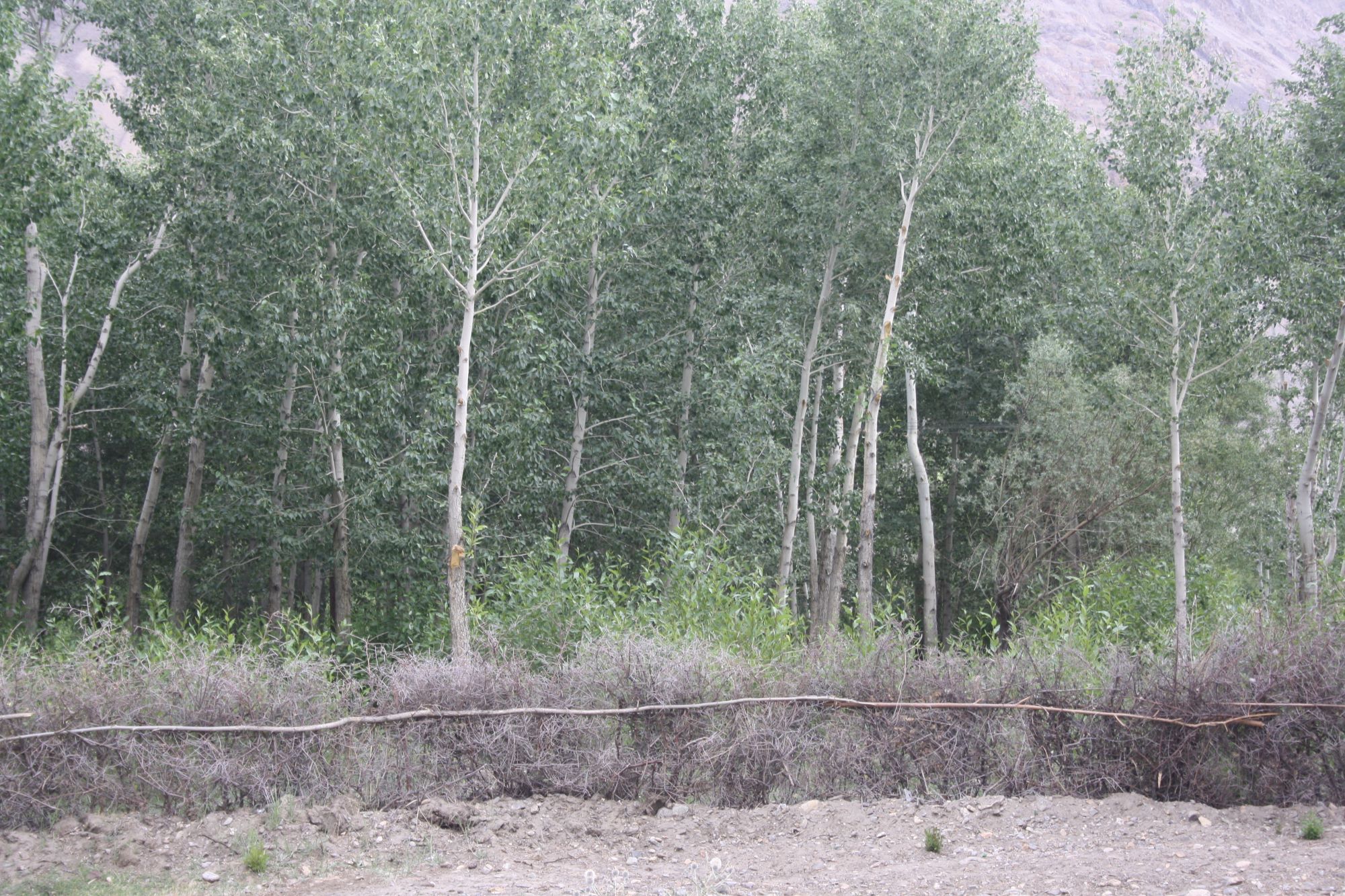
According to Zarifkhon, forests are one of the most valuable natural assets of Tajikistan, and their importance in the lives of people, especially in rural areas, cannot be overestimated.
“The forest provides us with a lot of valuable and useful resources: firewood, hay for livestock, building materials, medicinal plants, and much more,” Zarifkhon Gulchinov noted.
In addition, according to him, the forest is a source of clean air and a wonderful place to relax.
Sharing Knowledge and Experience in Forest Restoration
Currently, Zarifkhon Gulchinov is a specialist in the environmental public organisation “CAMP Tabiat” and visits different regions of Tajikistan frequently. As a specialist with many years of practical experience in forest restoration, he can thoroughly explain to rural residents the importance and benefits of Joint Forest Management.
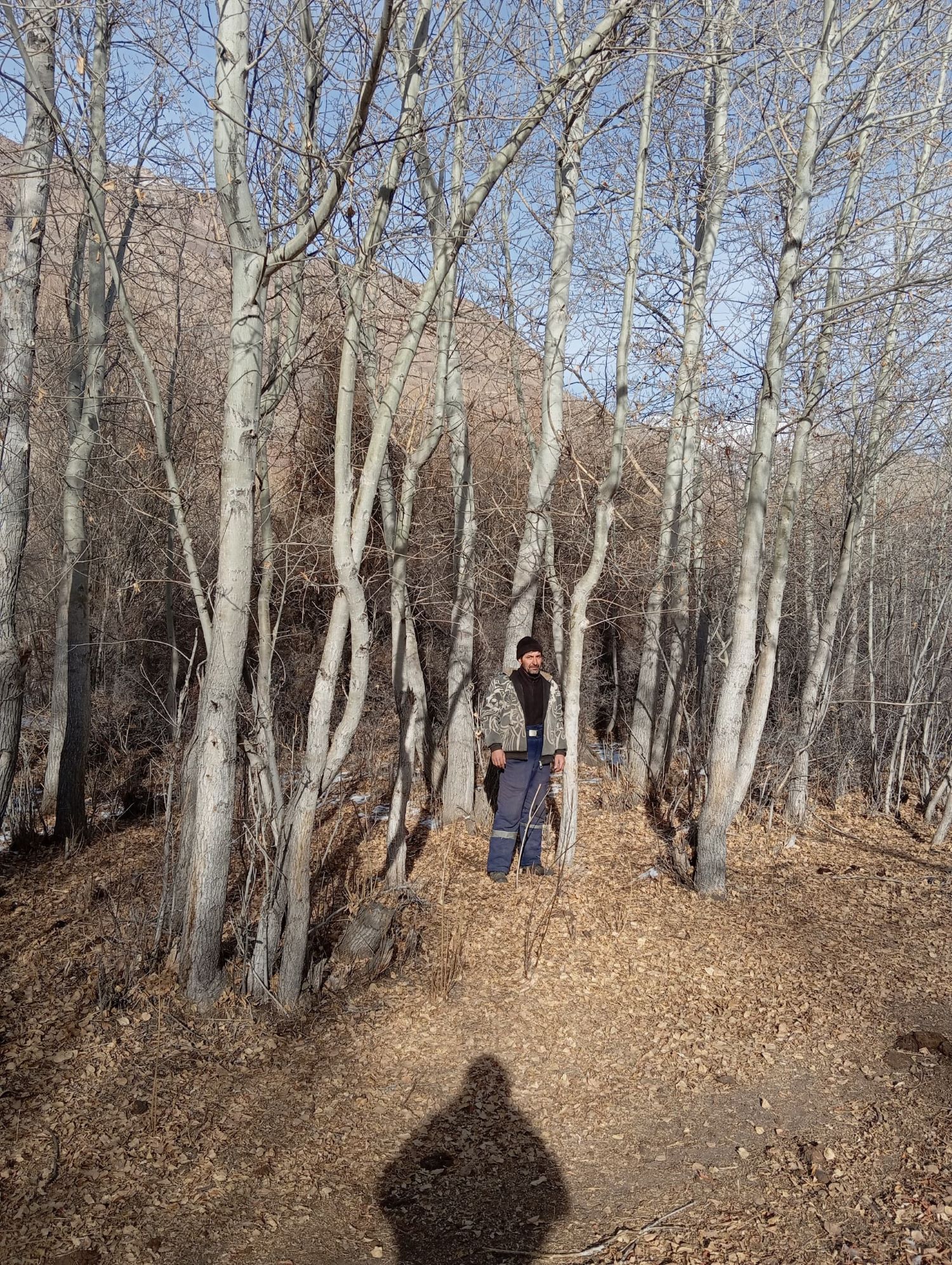
Zarifkhon also works on the conservation of mountain pastures within the framework of the UNEP/IKI Central Asian Mammals and Climate Adaptation (CAMCA) Project. His speeches and presentations on the sustainable and efficient use of forests and pastures, which he conducts in remote villages of Tajikistan, particularly, in the Yaghnob Valley of Sughd region, arouse genuine interest among local residents.
“We must definitely share our knowledge and experience in restoring the Pamir forests with residents of other regions of the country where there are forest lands,” Zarifkhon said. “The current condition of the forest near Barvoz village, where I live, indicates that we are on the right path.”Saving Nature for Future Generations
Despite notable achievements, Zarifkhon believes that we should not be satisfied with what has already been achieved but must continue the hard work of restoring and preserving the unique natural ecosystems of Tajikistan.
As Zarifkhon noted, at all times, there was a tradition in GBAO of providing free mutual assistance, thanks to which people were able to survive in harsh natural and climate conditions.
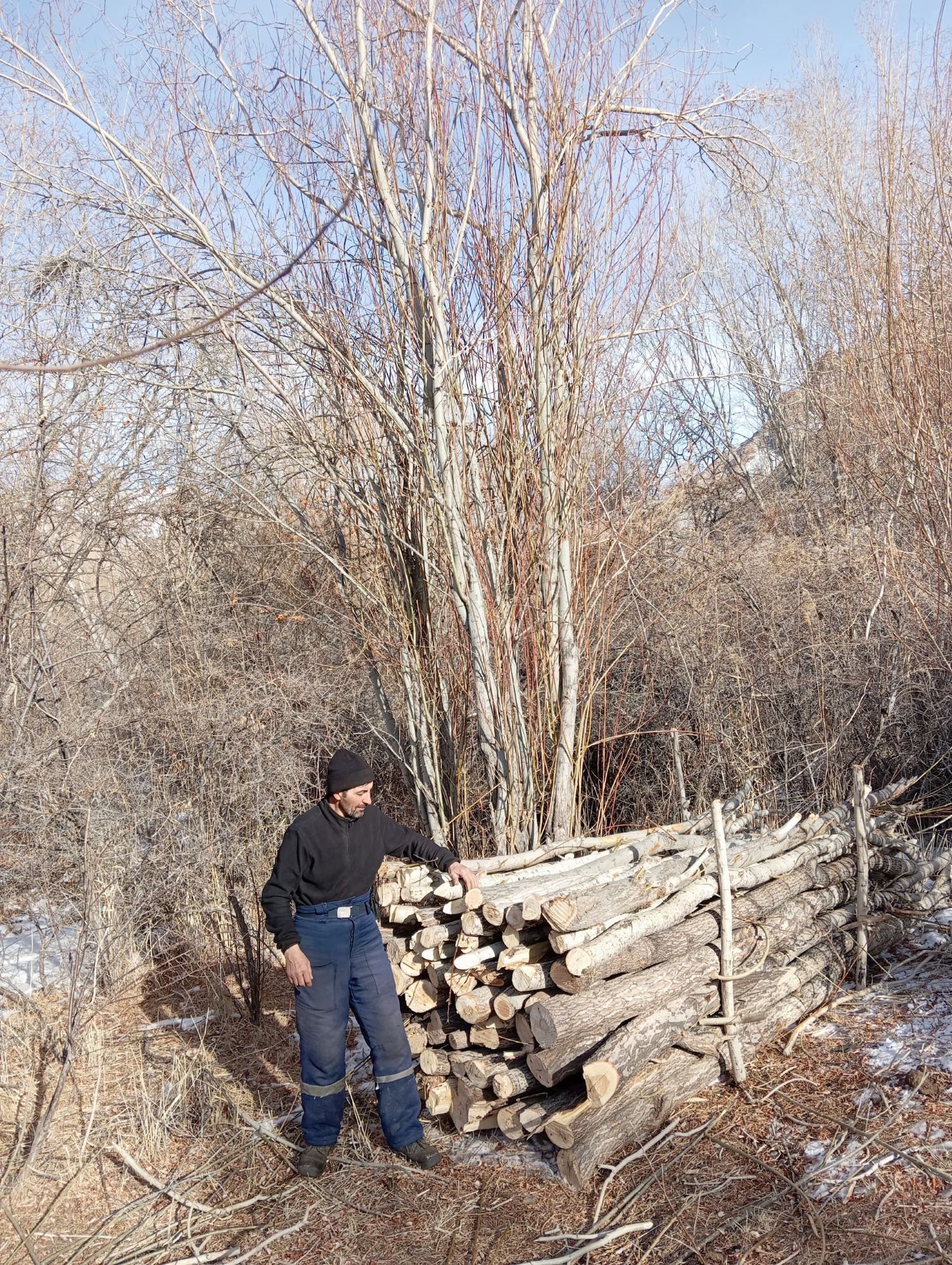
“Luckily, now, we, forest users, receive help, if necessary, not only from our families but also from relatives and neighbours,” Zarifkhon said. “We always support each other during restoration work, for example, during planting trees and irrigating our plots.”
According to Zarifkhon, the principles of the Joint Forest Management are largely consistent with the ancestral traditions of local residents.
“Our ancestors considered the environment to be alive and sacred, valued and treated nature with care, and maintained balance and moderation when using natural resources,” he noted. “They left us a healthy and prosperous forest and we must follow their example to preserve our forest for future generations.”


